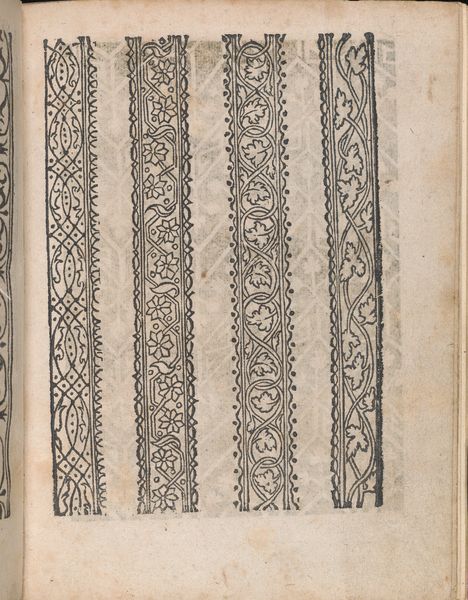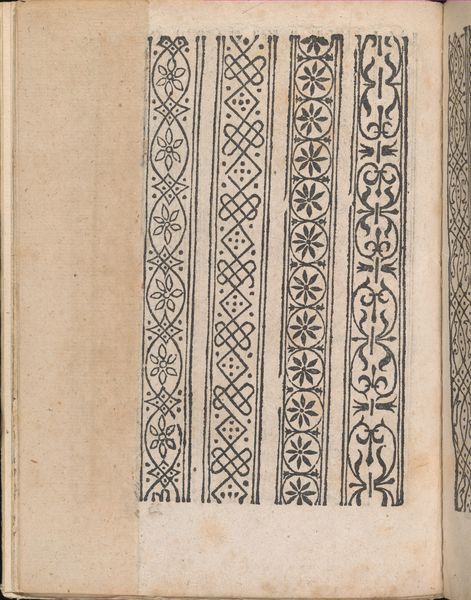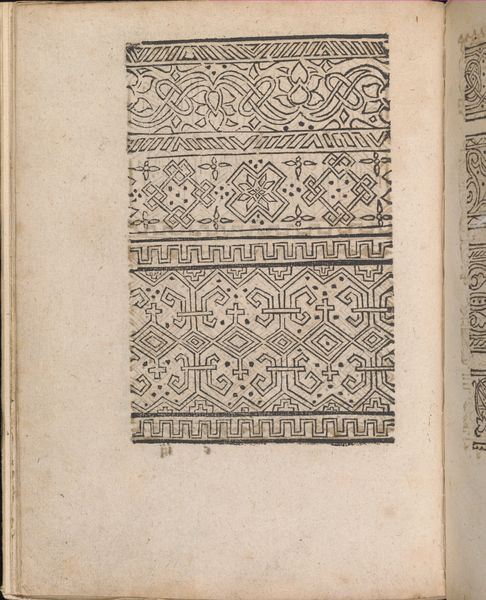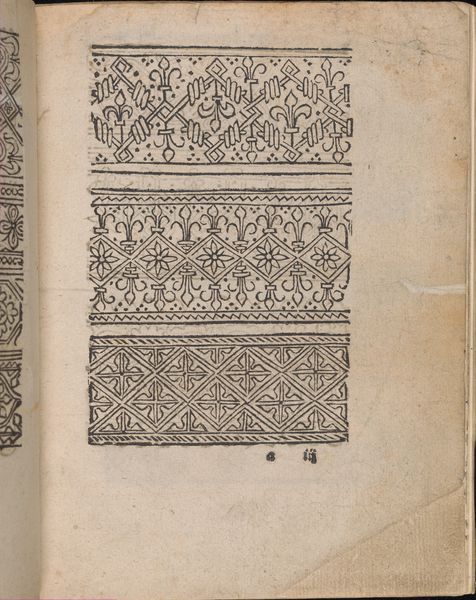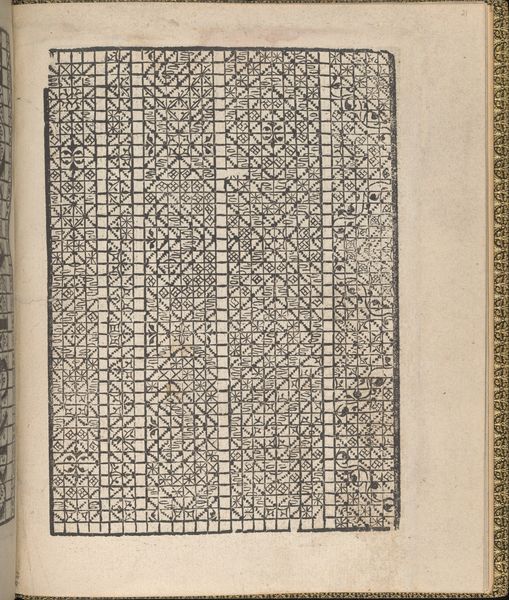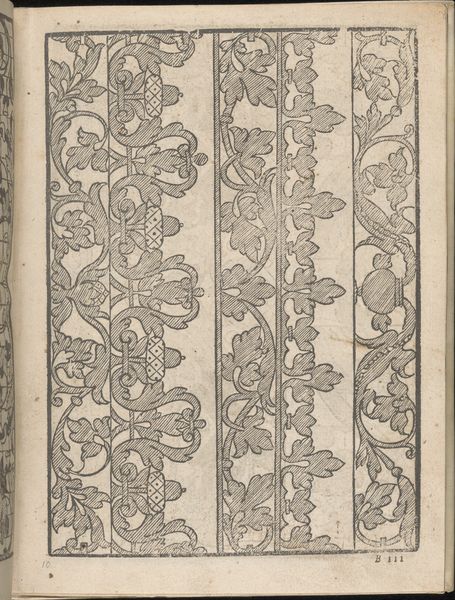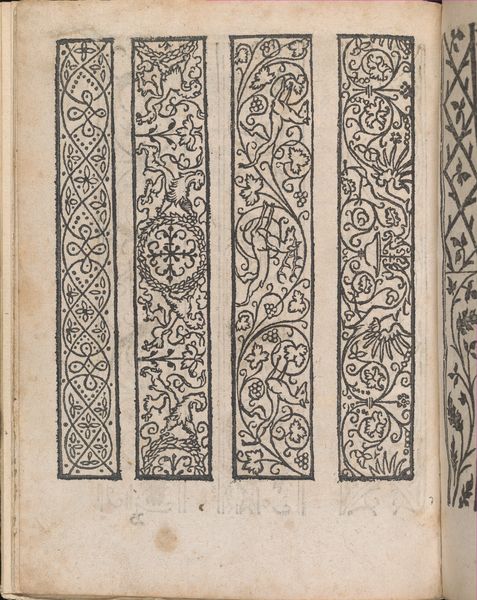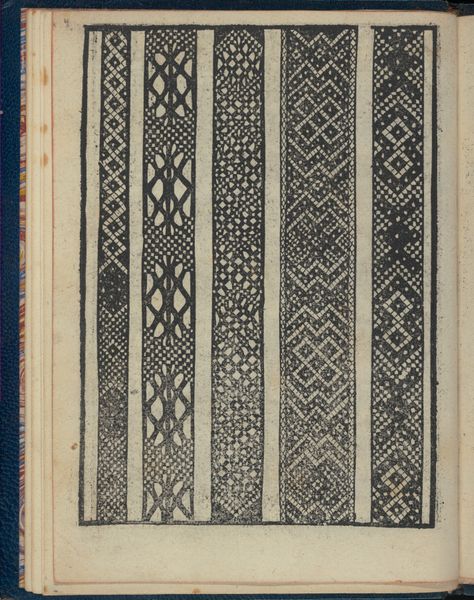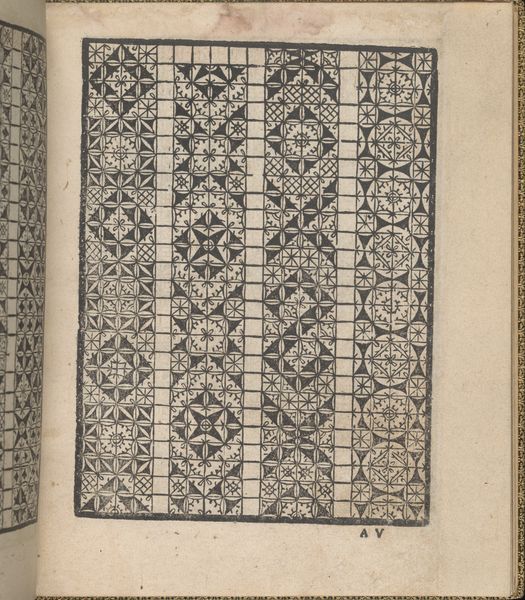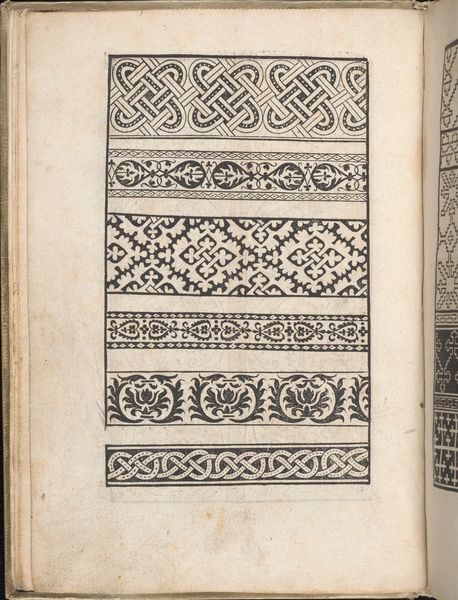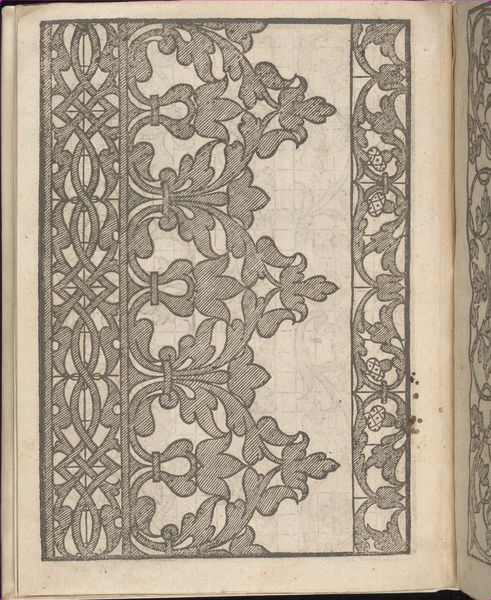
Modelbuch aller Art Nehens vn Stickens (Page 7r) 1535
0:00
0:00
drawing, print, paper, ink, woodcut
#
drawing
#
medieval
#
germany
# print
#
book
#
sketch book
#
paper
#
11_renaissance
#
ink
#
geometric
#
woodcut
#
decorative-art
Dimensions: Overall: 7 5/16 x 5 5/16 in. (18.5 x 13.5 cm)
Copyright: Public Domain
Curator: Welcome. We’re looking at a page from Christian Egenolff’s *Modelbuch aller Art Nehens vn Stickens*, from 1535. It’s a drawing rendered in ink and woodcut on paper. Editor: Initially, it strikes me as visually calm and quite contained. The rhythmic patterns almost give off a meditative, soothing vibe. Curator: Yes, it’s a page from a book meant as a reference for embroidery and needlework. Observe how the patterns are displayed in vertical bands; each presenting different design possibilities for borders and edgings. Note the alternating geometric and floral motifs. Editor: Beyond their function, I find these patterns to be rich with social implications. During the Renaissance, the ability to create elaborate needlework signaled not only artistic skill but also economic status and, in many ways, controlled representations of femininity. Were women able to profit independently off these pattern books? Curator: These manuals played a critical role in the development and spread of decorative arts, but you raise important questions about authorship and accessibility. Egenolff was a printer and publisher; therefore, it’s most likely that women's labor benefited him far more. Editor: Right. Consider how knowledge was disseminated and controlled within patriarchal structures. These "model books" aren't just benign guides but complex sites where gendered labor, commerce, and artistry intersect. Curator: True. Also consider the visual language. These linear designs, with their repeated elements, exemplify Renaissance aesthetics, celebrating symmetry and balance. They create harmonious compositions through the repetition and variation of simple motifs. Editor: What resonates most deeply with me is the untold stories woven within these patterns – labor, identity, and creativity as expressions of resistance. Curator: A fitting observation, these designs, though seemingly straightforward, present a rich field for analysis and thought. Editor: Yes. Now, perhaps listeners will contemplate this art from both perspectives and, perhaps, begin conversations about pattern, process, and societal threads.
Comments
No comments
Be the first to comment and join the conversation on the ultimate creative platform.
